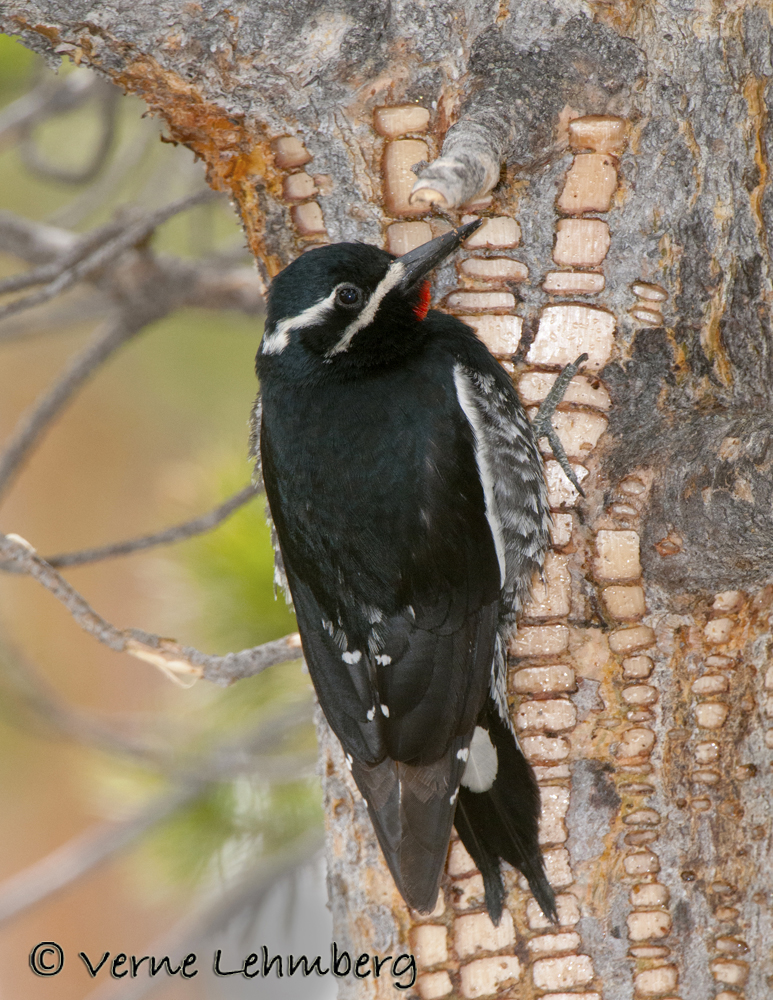
It’s wintertime and I am in Texas missing Yellowstone. We will be back there in April but in the mean time I will have to console myself with memories of the past. I am a bird watcher so we spend a good bit of time chasing and photographing birds. One of our favorites during the nesting season is Williamson’s sapsucker. All sapsuckers are woodpeckers. Have you ever thought about how tough it is to be a woodpecker? If I want to bang on a piece of wood I get out a hammer and go at it, but all woodpecker’s have is their bill. I don’t know about you but that would give me a headache real fast. They do have one adaptation that helps them bang on wood and that is there skulls are thicker than other birds their size. I guess that protects their brains but still. . . .
Another neat adaptation in woodpeckers is their tongue. Many vertebrates, including humans, have a tongue bone called a hyoid bone. Ours is not as well developed as in some other animals. In fact it is the only bone we have that floats and is not connected to other bones except distantly by ligaments and some muscles. That is not true in birds, especially woodpeckers. In woodpeckers the hyoid bone forms two long, thin, curved bones attached to the back of opposite sides of their tongue. When their tongue is in their mouth these two long, thin structures wrap all of the way around the skull and end near the mouth. After a woodpecker makes a hole in a tree it sticks its tongue into the hole probing for insects. The hyoid bone is also in the tip of the tongue where it comes to a point and allows woodpeckers to impale insects. As it sticks it’s tongue into a hole the two back thin pieces slide all of the way around the head and allow the bird to stick it’s tongue way out.
Although sapsuckers can make holes in trees they do it differently than other woodpeckers. They make shallow holes close to each other just deep enough to reach the layer where the bark meets the wood, where most of the sap is located. Then they leave their new holes for a while until some sap comes out. They return and drink the sap and grab any insects that got trapped. In the case of Williamson’s sapsucker you can always find their sap trees as they make very distinctive rows of sap holes as seen in the first two photos below.
When Williamson’s sapsuckers were first discovered the male and female were thought to be two different species because they didn’t look anything like each other. The one that is mottled black and white is the female and the male is the one with an almost solid black back.
We have found Williamson’s sapsuckers in Yellowstone at Calcite Springs, at the entrance to the Blacktail Plateau Road, near the road east of Floating Island Lake, and along Blacktail Plateau Road.









What great shots. I never knew what their holes looked like but sure can see the pattern. And, sure did not know about the tongue bones.